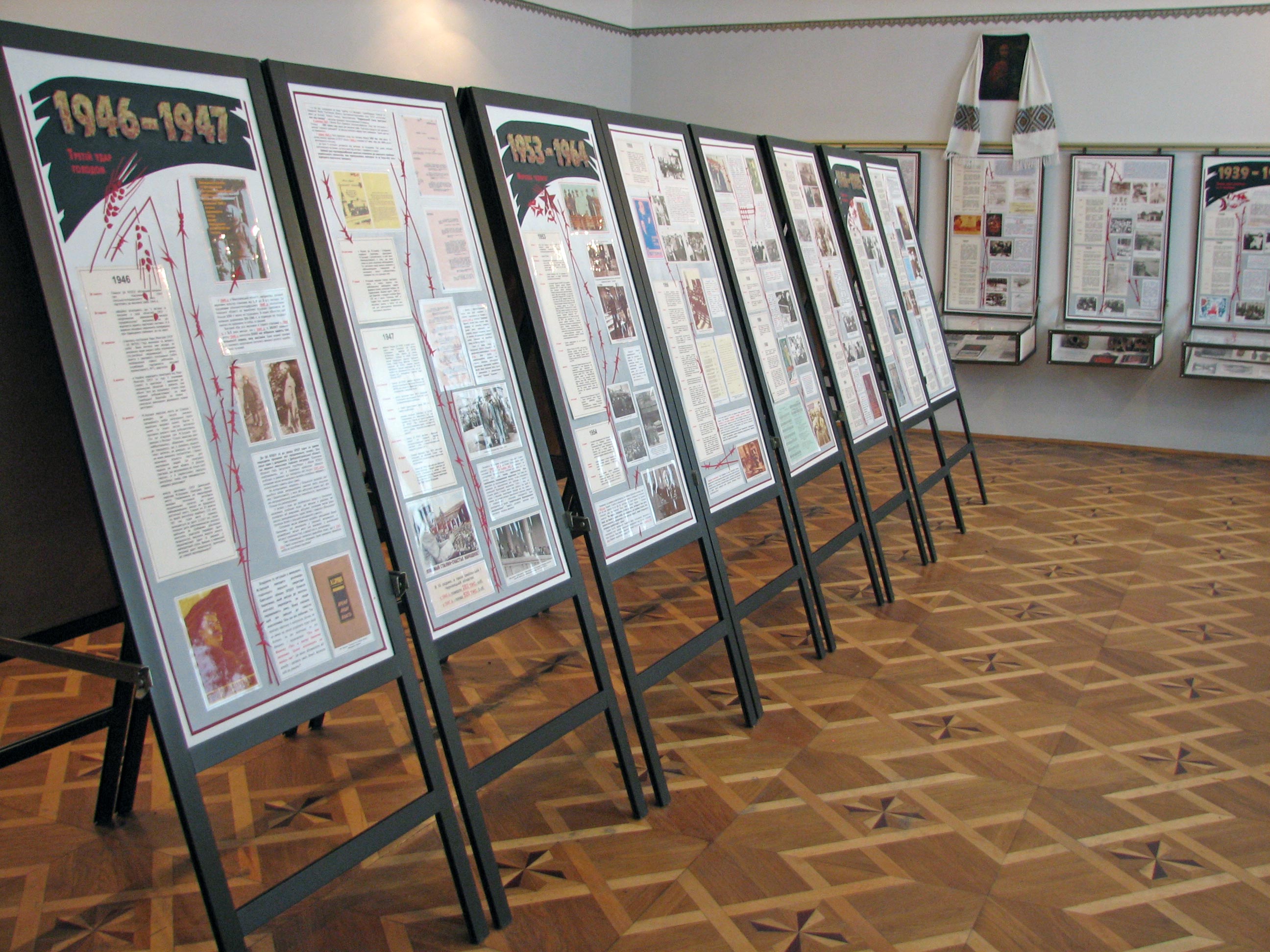Museum Of Soviet Occupation, Kyiv on:
[Wikipedia]
[Google]
[Amazon]
 The Museum of Soviet occupation (, ''Muzei radianskoi okupatsii'') in
The Museum of Soviet occupation (, ''Muzei radianskoi okupatsii'') in
Museum of Occupations (Estonia)
 The Museum of Soviet occupation (, ''Muzei radianskoi okupatsii'') in
The Museum of Soviet occupation (, ''Muzei radianskoi okupatsii'') in Kyiv
Kyiv, also Kiev, is the capital and most populous List of cities in Ukraine, city of Ukraine. Located in the north-central part of the country, it straddles both sides of the Dnieper, Dnieper River. As of 1 January 2022, its population was 2, ...
, Ukraine, is devoted to portraying the crime
In ordinary language, a crime is an unlawful act punishable by a State (polity), state or other authority. The term ''crime'' does not, in modern criminal law, have any simple and universally accepted definition,Farmer, Lindsay: "Crime, definiti ...
s of the Soviet
The Union of Soviet Socialist Republics. (USSR), commonly known as the Soviet Union, was a List of former transcontinental countries#Since 1700, transcontinental country that spanned much of Eurasia from 1922 until Dissolution of the Soviet ...
regime in Ukraine from 1917 to 1991. It was established in November 2001 by the Vasyl Stus
Vasyl Semenovych Stus (; January 6, 1938 – September 4, 1985) was a Ukrainian poet, translator, literary critic, journalist, and an active member of the Ukrainian dissident movement. For his political convictions, his works were banned by th ...
branch of Memorial Society as an exhibition "Not to be forgotten: The Chronicle of Communist inquisition." Between 2001 and 2007, the exposition grew into a full-fledged museum. On May 30, 2007, it received its current name.
History
In November 2001, theVasyl Stus
Vasyl Semenovych Stus (; January 6, 1938 – September 4, 1985) was a Ukrainian poet, translator, literary critic, journalist, and an active member of the Ukrainian dissident movement. For his political convictions, his works were banned by th ...
branch of Memorial Society established on its premises an exhibition titled "Not to be forgotten: The Chronicle of Communist inquisition." Documents, photographs and posters made up the initial items of the exposition. These were gathered by the Memorial branch in Ukraine and by sister-organizations in Russia. Among the most interesting exposee items is a large map of Soviet concentration camps in Ukraine created during the time of Beria
Lavrentiy Pavlovich Beria ka, ლავრენტი პავლეს ძე ბერია} ''Lavrenti Pavles dze Beria'' ( – 23 December 1953) was a Soviet politician and one of the longest-serving and most influential of Joseph ...
. The exhibition contained such sections as "Kyiv Martyrology", "Ukrainian Solovky", an exhibition on repression of the Ukrainian language, a special library. It has numerous archives of documents, books, videotapes etc.
In May 2007 the exhibition was named a Museum of Soviet occupation. The Museum was visited by Honorary President of the Paneuropean Union
The International Paneuropean Union, also referred to as the Pan-European Movement and the Pan-Europa Movement, is an international organisation and the oldest European unification movement. It began with the publishing of Richard von Coudenh ...
and a direct descendant of the Habsburg
The House of Habsburg (; ), also known as the House of Austria, was one of the most powerful dynasties in the history of Europe and Western civilization. They were best known for their inbreeding and for ruling vast realms throughout Europe d ...
family Otto von Habsburg
Otto von Habsburg (, ; 20 November 1912 4 July 2011) was the last crown prince of Austria-Hungary from 1916 until the dissolution of the empire in November 1918. In 1922, he became the pretender to the former thrones, head of the House of Habs ...
.
The very fact of the opening of such an institution initially raised disputes in the Ukrainian society. Olha Ginsburg, the head of the State Archive Committee of Ukraine at the time and a member of the Communist Party of Ukraine
The Communist Party of Ukraine (CPU or KPU) is a banned political party in Ukraine. It was founded in 1993 and claimed to be the successor to the Soviet-era Communist Party of Ukraine, which had been banned in 1991. In 2002 it held a "unifi ...
, refused to share archive materials with the new Museum. Such refusal was described by the Director of Vasyl Stus Memorial Society Roman Krutsyk as "an ordinary communist practice to conceal their crimes".
Eponymous museums are active in Georgia
Georgia most commonly refers to:
* Georgia (country), a country in the South Caucasus
* Georgia (U.S. state), a state in the southeastern United States
Georgia may also refer to:
People and fictional characters
* Georgia (name), a list of pe ...
( Museum of Soviet Occupation (Tbilisi)), Latvia
Latvia, officially the Republic of Latvia, is a country in the Baltic region of Northern Europe. It is one of the three Baltic states, along with Estonia to the north and Lithuania to the south. It borders Russia to the east and Belarus to t ...
and Estonia
Estonia, officially the Republic of Estonia, is a country in Northern Europe. It is bordered to the north by the Gulf of Finland across from Finland, to the west by the Baltic Sea across from Sweden, to the south by Latvia, and to the east by Ru ...
.See also
*Virtual Museum of Soviet Repression in Belarus
The Virtual Museum of Soviet Repression in Belarus () is a non-commercial project of oral history from historians and other scientists from Belarus. Created as a virtual museum, it covers Soviet repression in Belarus.
Background
In 2007, the Bela ...
References
Museum of Soviet Occupation, Kiev Museums established in 2001 Military and war museums in Kyiv Anti-communism in Ukraine Museums of communism {{communism-stub